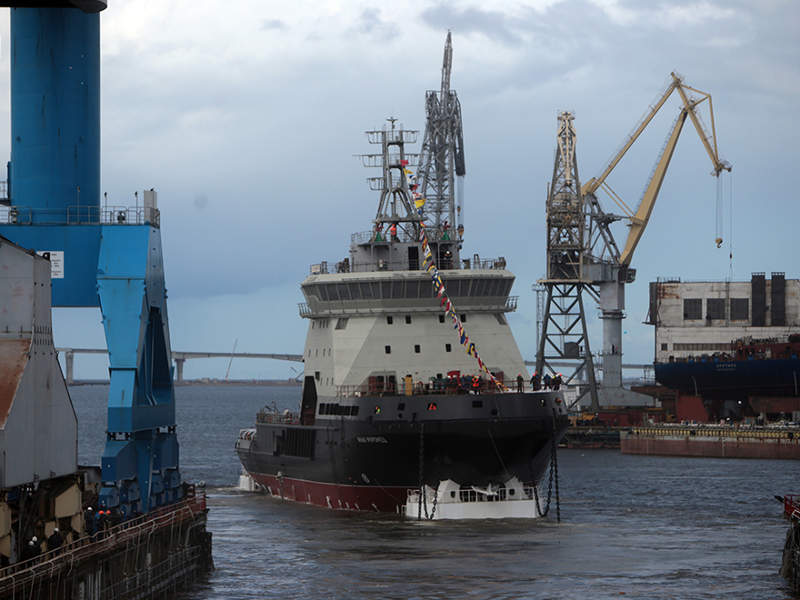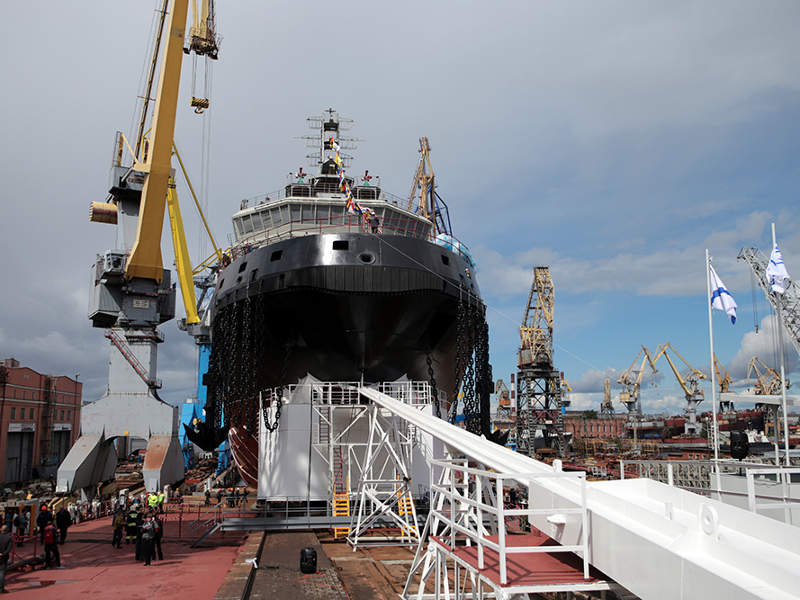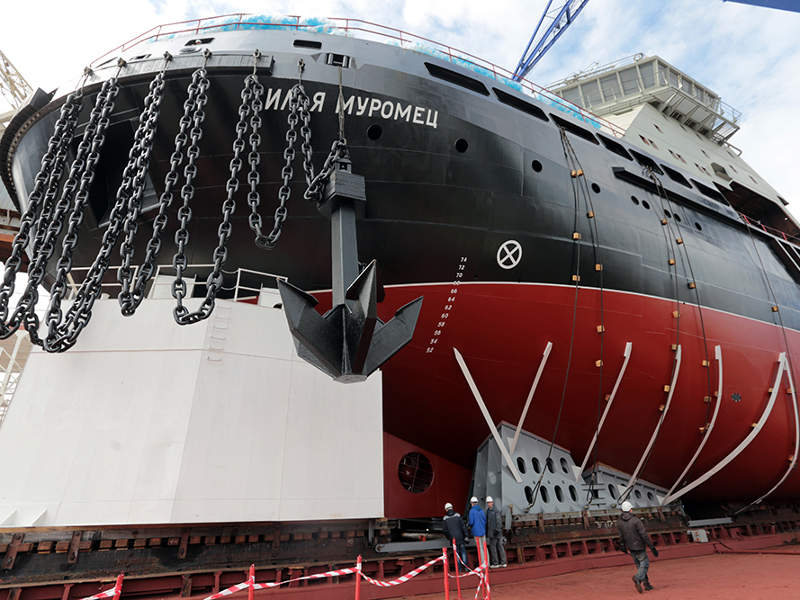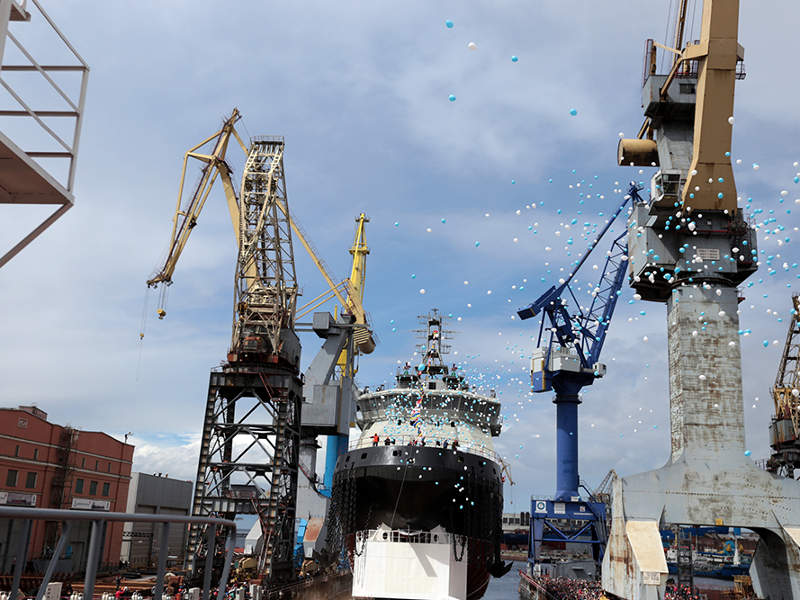A series of four Project 21180 multi-purpose vessels were built by JSC Admiralty Shipyards, a company headquartered in St Petersburg, Russia, for the Northern Fleet of the Russian Navy.
The Project 21180’s primary mission is to provide icebreaking services for Russian Naval forces deployed in the Arctic zone and Far East. The vessel is also suitable for other missions, such as patrol, oil spill response, tow combat ships, cargo transportation, and research in Arctic waters in fields including hydrography, oceanography and meteorology.
Construction details of Project 21180-class icebreakers
The Russian Ministry of Defence awarded a contract to JSC Admiralty Shipyards in 2014 to build four Project 21180 icebreakers that would replace the Russian Navy’s auxiliary ships.
The keel for the first icebreaker in the series, named after epic hero Ilya Muromets, was laid in April 2015, and its launching ceremony was held in June 2016. The vessel was expected to be delivered to the Russian Navy in November 2017.
Project 21180 multi-purpose vessel design and features
Featuring a single deck, the Project 21180 icebreaker is manned by 35 personnel and is capable of carrying an additional 50 people.
The vessel is 84m long and 20m wide, with a hull depth of 9.2m, draught of 7m and displacement of 6,000t. Its cargo deck area is 380m² and cargo hold is 500m³. The forward section is equipped with a helipad to support the operation of a single Ka-32 type helicopter.
The vessel can carry small boats, deployed through the stern launch-retrieval unit, for use in patrol and transportation missions. It also features a towing winch, fire detection system, galley equipment, and 300m³ waste oil storage tank.
Command and control
The icebreaker is commanded from the navigation bridge located forward on the deck, using an automation and control system.
The bridge offers operators improved all-around visibility through the square windows. It is equipped with advanced navigation systems, including an electronic chart display and information system, to ensure safe operation at sea.
The communications and radar antennae mounted on top of the bridge provide reliable communication for the vessel.
Diesel-electric propulsion system
The Project 21180-class is powered by a diesel-electric propulsion system, driving rudder propellers of 3.5MW each.
The electric propulsion system was supplied by Krylov State Research Centre’s affiliated branch TSNII SET (Ship Electric Engineering and Technology Research Institute) under a contract awarded in January 2015.
It comprises two 3,500kW propulsion motors, two frequency converters, an electric propulsion panel, propulsion system control unit, main switchboard, uninterruptible power supply, and panel of auxiliary electric drives.
The ship has Azypod mechanical double-screw pod drives able to rotate through 360° in its submerged pod outside the hull. It is also fitted with bow thrusters for efficient operation in icy conditions.
Project 21180 icebreaker performance
The diesel-electric icebreaker can sail at a maximum speed of 15k and has a cruising range of 12,000 miles. It can endure for approximately two months and operate in approximately 1m-thick ice.
It is certified to the International Convention for the Safety of Life at Sea (SOLAS) and the Environmental Protection Agency (MARPOL).











